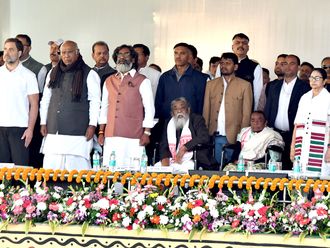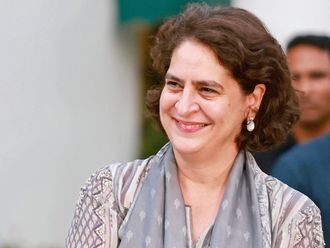
Across Europe, now that schoolchildren are back in their classrooms, students are back at universities and the events of the summer holidays are winding down, airfares on the continent have plummeted.
And while it may seem attractive to be able to travel from Brussels to Oslo from an advertised fare of €9 — about Dh40 — there’s a harsh reality about flying with the many budget airlines that ply the skies across Europe.
Brussels? Well, that’s a bit of a stretch for starters. The fine print will tell you that its Brussels Charleroi, a smaller regional airport that is a good hour’s ride from the actual city. And Oslo? Again, the flight to a smaller regional airport far outside the city.
By the time you’ve travelled to these airports from that flight, you’ve lost a lot of time and effort that hardly makes these savings seem worthwhile.
And there’s nothing free on these flights either, not like on the quality airlines such as Emirates or Etihad in Dubai and Abu Dhabi. Want to bring hand luggage? That’s €25 please. Water? €2.50. You’ll be badgered with special duty free offers that are flogged on the flight by cabin crew who have sales quotas they need to meet. And there’re even scratch cards sold to tempt you with flights and prizes, all in the name of raising funds for the airline’s charity — and for which they’ll take a significant reduction in their corporate taxes.
The seats are hard and plastic and they don’t move. Inevitably too, there’s a child behind kicking away for the duration of the flight as the inattentive parent is too busy on headphones and mobile phone to care.
Michael O’Leary, the chief executive officer of Ryanair, the largest budget airline in Europe, has even gone so far as to suggest that there’s no need for a second pilot on the cockpit, and he could put one of the cabin crew in there instead in the event of an emergency. Having recently watched Sully, the Tom Hanks movie about the ‘Miracle on the Hudson’, the more experience you have in any cockpit the better.
O’Leary has mused too about making passengers pay for using the toilet on board. The more cynical of us would suggest that’s not too far away either, given that you pay for everything else on board his flights.
He has asked Boeing to look at developing a seat for planes that isn’t as much in the sitting position, but one where passengers stand and merely rest their posteriors on a small ledge. That way, he’d be able to get more than the current 189 passengers on board — maybe 230 or so. I wonder how kicking children would react to that!
Small regional airports all across Europe have been handed new leases of life because of budget carriers who are willing to make deals with desperate local governments eager to keep their airport facilities open. In many ways, these regional governments are effectively subsidising the operations of the airlines who fly in there, who park away from the terminal building and who don’t pay for air bridges to reach out to the passengers to keep them cool in the summer and dry in the winter.
There’s a danger too that when these governments try and raise rents of landing fees, the budget airlines — often the only carriers who fly there — are more than willing to walk away from the destination, leaving the governments worse off than before.
The reality is that air travel across Europe is no more than a glorified coach service, where passenger comfort is the last thing that these airlines consider.
But there’s a reality too that the main consideration for many is price, which is why most budget airlines across the continent report flying well above 90 per cent capacity. It’s cheap, and there’s little alternative. And we love to hate flying them anyway.










